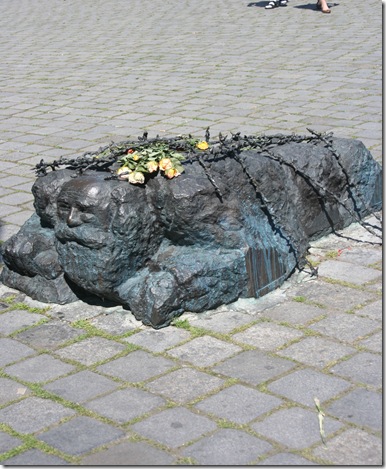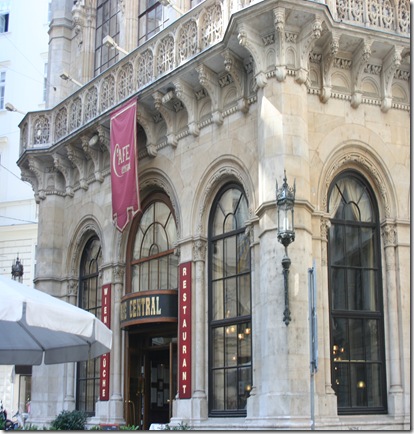Today seemed to focus on the war years and the effects on Vienna and its people - especially the Jews. We began our day by going to "The Gates of Violence" - a monument against war and fascism erected near the Opera. It is a dramatic sight on its own but the history makes it even more powerful. It was built on the site of an apartment building that was bombed during the war. An unknown number of people were killed while taking shelter in the basement and their bodies were never recovered.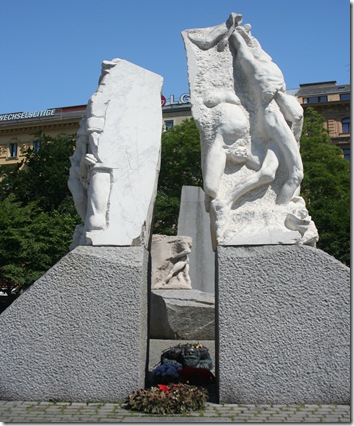
The marble used to create the sculpture was taken from the quarry near Mauthausen Concentration Camp (the same quarry where camp labourers were forced to enormous blocks of marble up uneven steps) Images of slave labourers, gas masks and clubs have been carved into this marble and on the ground, between the "gates", is a hunched over figure - a Jew forced to scrub anti-Nazi graffiti from the pavement with a toothbrush.
I find the flowers left at these monuments and memorials especially moving. Who left them and why? Was family lost in the Holocaust or is a survivor remembering the horrors?
We then went to the Jewish Museum of the City of Vienna. An enormous collection of religious artifacts was gathered by a man who lost his entire family in concentration camps and is now on display in the museum. A very informative audio guide detailed the various Jewish celebrations and the significance of these artifacts. Many of them were looted from synagogues and Jewish homes by the Nazis and have been recovered and preserved. Some were even charred from the destruction of the pogroms.
One floor was dedicated to Jewish musicians from the war years. Several emmigrated to the US and made great contributions to the Hollywood movie industry.
The local synagogue was only open for guided tours once a day so we headed there. Except for the sign, one wouldn't know there was a synagogue in the neighbourhood. This was the due to an ancient law stating that only Catholic churches could be free-standing structures. All other religious institutions had to blend in with other buildings in their neighbourhood.  As a result of that law, this was the only synagogue that was not destroyed by bombs during the war. Of 59 synagogues once in Vienna, this is the only remaining synagogue.
As a result of that law, this was the only synagogue that was not destroyed by bombs during the war. Of 59 synagogues once in Vienna, this is the only remaining synagogue.
A terrorist attack in the 80's has increased the level of security here. No entrance without a passport and our bags were searched and scanned. We were questioned as to whether we were given anything to carry in, did we have knives or other weapons...an indication that despite the memorials and museums, things have not changed.
Inside, the synagogue is spectacular. It was designed by an architect who also designed theatres. He applied the same concepts to this building - balconies, a stage-like altar, domed ceiling and colour and light. Magnificent! And again, memorials to all those lives lost in concentration camps. Never forget.

Photography was allowed inside the synagogue but not facing the rear of the sanctuary. I couldn't figure out the reason for this but someone asked and we learned it was for security reasons - so no one could record the entrances and exits!
In a square called Judenplatz, (the site of the 15th century Jewish community) stands another memorial.
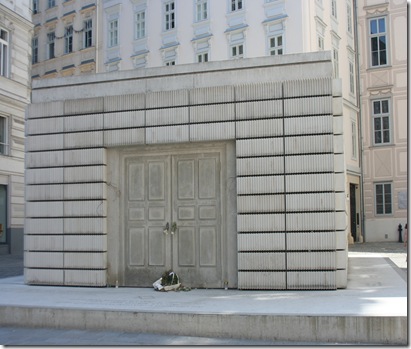 It is a concrete box designed to look like a library turned inside out - the spines of the books aren't showing.
It is a concrete box designed to look like a library turned inside out - the spines of the books aren't showing. 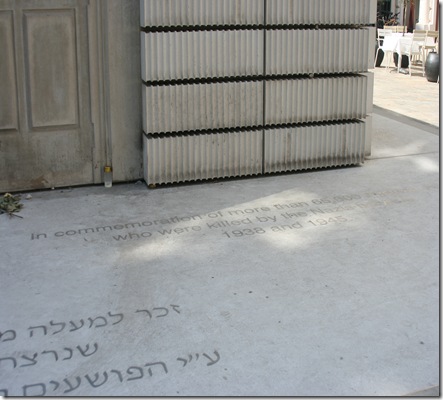 It honours the 65 000 Austrian Jews who were killed by the Nazis and the names of the concentration camps where so many died are engraved in the platform surrounding the building.
It honours the 65 000 Austrian Jews who were killed by the Nazis and the names of the concentration camps where so many died are engraved in the platform surrounding the building. 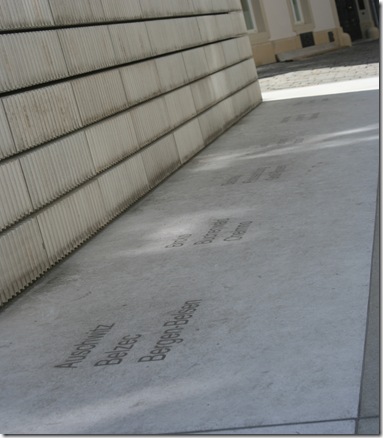 The books symbolize the Jews as a "people of the book". It is intended to make one think about the loss of culture and knowledge and potential during this period in history.
The books symbolize the Jews as a "people of the book". It is intended to make one think about the loss of culture and knowledge and potential during this period in history.
It was a thought provoking day but not without its light moments! We were walking through the U bahn station at the Opera and came upon the bathrooms. For .60 euro, you can use the toilette mit musik! Not sure what you paid for since we could hear the opera music in the hallway as we walked by?!
We also managed to see Hofburg Palace - a vast complex of buildings including the Imperial Apartments, the National Library, the home to the Vienna Boys' Choir, the Austrian president's office and several museums.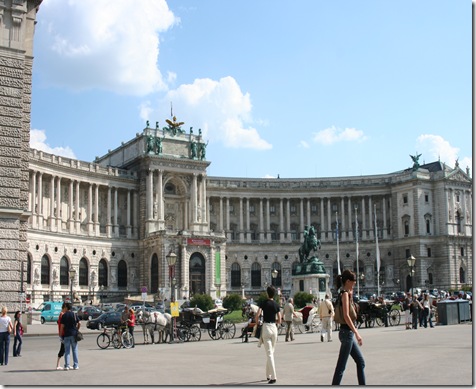
The Spanish Riding School is also there and we saw some of the famous Lipizzan horses in their stables. 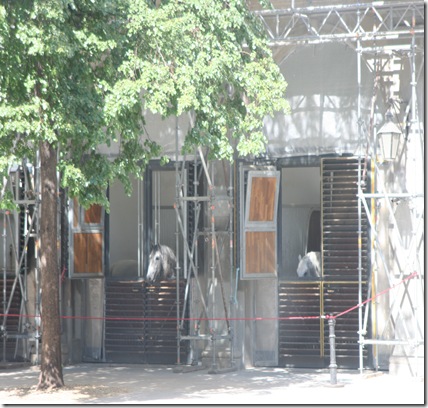
We also saw the cafes where Freud and Trotsky used to sit and drink coffee and think! (This is Cafe Central where Trotsky and his cronies would meet.)
It is a city full of a richness and history that makes Canada seem pretty insignificant! And so we leave Vienna and Austria. It is certainly a country I would like to revisit someday. Tomorrow is our longest travel day - 10 hours on trains! We will take the U bahn (subway) out to the train station to catch the 7:40 a.m. train from Vienna to Innsbruck (so an early morning!) then have a brief wait until we go from Innsbruck to Venice. We will arrive in Venice at 6:30 - a nice time to float down the Grand Canal enroute to our hotel!
